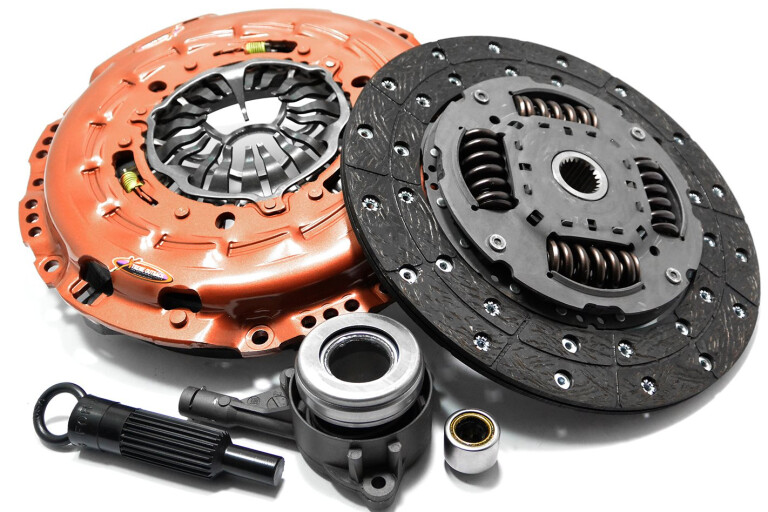
FOR THE control freaks among us who like to select our own gears rather than let a computer do the thinking, there is one extremely important driveline component that needs to be treated with a great deal of respect and mechanical sympathy: the clutch.
Your vehicle’s clutch not only allows for engagement (and disengagement) between the engine and the gearbox, but it also dampens engine pulses to provide a smooth and consistent power delivery throughout the driveline.
If your vehicle’s OE (original equipment) clutch starts slipping or wears out prematurely, chances are you’re not treating it right or it’s simply not up to the job you’ve assigned to it.
In most cases (although, not always), vehicle manufacturers equip four-wheel drives with a clutch that’s adequate for said vehicle’s intended function, such as day-to-day driving, some off-road driving and some towing.
 But manufacturers rarely take into account that off-roading enthusiasts usually take things to the next level: fitting bigger tyres, carrying accessories and gear, chipping the engine and fitting an exhaust, and dragging around a trailer that’s within a few grams of maximum stated towing capacity.
But manufacturers rarely take into account that off-roading enthusiasts usually take things to the next level: fitting bigger tyres, carrying accessories and gear, chipping the engine and fitting an exhaust, and dragging around a trailer that’s within a few grams of maximum stated towing capacity.
Do any of the above and you’ll soon find your vehicle’s standard clutch is left wanting, and whether it’s slipping, smelling or squeaking, it’ll need to be replaced before it fails completely. Rather than source another OE clutch, you’ll need to fit a heavy-duty aftermarket unit to cope with the additional demands that are a by-product of heavy loads, more torque or -towing.
AFTERMARKET ALTERNATIVE
ADELAIDE-BASED company Australian Clutch Services (ACS) has been supplying clutch kits and components for more than 25 years, and it offers a wide range of aftermarket heavy-duty clutch kits to suit most four-wheel drive vehicles on the market, under the Xtreme Outback banner.
“There are several advantages of fitting a heavy-duty aftermarket clutch over an OEM clutch,” said Stewart Furze, mechanical engineer at ACS. “In 4x4 applications – where you may be modifying the vehicle, you may be increasing power, you may be adding a lot of extra weight or towing – most of those users are going to be using the engine to its peak performance a lot of the time.
For example, when you’re towing, you’re going to be using the peak torque of the engine a lot more than you would be if you were just driving the kids to school. So, in those situations, that’s when the OE clutch may not last as long as you would expect.”
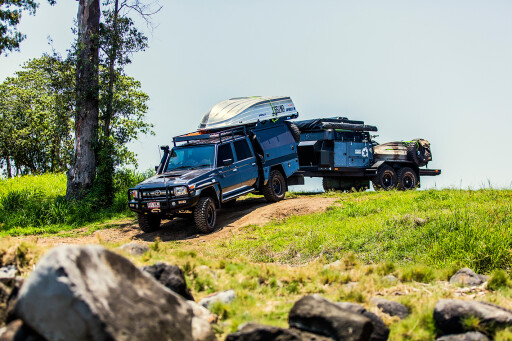 In those situations you’re likely to experience an accelerated rate of wear and the clutch will begin to slip. “A good example is the VDJ79 [Land Cruiser]. As soon as owners chip or tune them, the factory clutch just doesn’t hold the extra torque… so it’ll just slip straight away. In other instances, owners might just see an accelerated rate of wear to the point where it starts to slip after a couple of thousand kilometres after doing modifications.”
In those situations you’re likely to experience an accelerated rate of wear and the clutch will begin to slip. “A good example is the VDJ79 [Land Cruiser]. As soon as owners chip or tune them, the factory clutch just doesn’t hold the extra torque… so it’ll just slip straight away. In other instances, owners might just see an accelerated rate of wear to the point where it starts to slip after a couple of thousand kilometres after doing modifications.”
So why can’t an OE clutch cope with the demands of increased torque output or heavier loads?
“Generally it’s a lack of clamping force,” he said. “It’s also the extra heat that’s generated, which will accelerate wear. Any excessive heat, or harder engagement, or even riding a clutch because you’ve got more weight, that all generates heat, which will accelerate how quickly the clutch will wear.
“And if it starts to slip, that means that basically the clutch is either completely worn or it just does not have the clamp load required to carry the torque.”
CLUTCH DEVELOPMENT
AUSTRALIAN Clutch Services has an in-house R&D facility that provides it with the resources to analyse new friction materials and evaluate spring rates to obtain the optimal combination of performance, noise suppression and durability. When ACS sets about developing a range of heavy-duty clutch kits to suit a specific vehicle, its engineers first examine the specifications of the OE clutch.
“Our first port of call is making sure we know exactly what’s supplied by the factory,” said Stewart. “So we have a look at the specifications… to ascertain exactly what it will have. For example, 800kg of clamping force.
“As a general guide, most of our first stage [heavy-duty] kits offer around a 20 to 30 per cent increase in clamping force. So that’s our first goal: how can we achieve a 20 to 30 per cent increase in clamping force? The majority of our customers are only going to go for that first level of modification.”
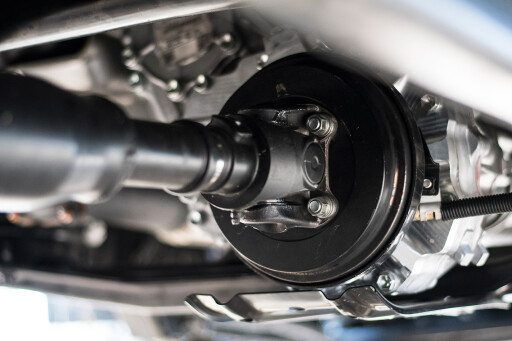 Despite this increase in clamping force – designed to handle the extra torque produced by a modified engine and the additional stresses imposed on the driveline by heavy towing or extreme off-roading – ACS strives to retain drivability by ensuring pedal effort is not excessive, as well as ensuring the clutch has a nice, progressive feel.
Despite this increase in clamping force – designed to handle the extra torque produced by a modified engine and the additional stresses imposed on the driveline by heavy towing or extreme off-roading – ACS strives to retain drivability by ensuring pedal effort is not excessive, as well as ensuring the clutch has a nice, progressive feel.
“We try to optimise the operation effort,” Stewart continued. “We try to keep it as close to factory as possible. We also look at different friction materials and flywheel options. A lot of 4x4s have dual-mass flywheels, and in order to create heavy-duty options we need to create a single-mass flywheel conversion at the same time.
“Dual-mass flywheels are put into vehicles for a few reasons,” he said. “The main reason is noise suppression, and the other key one is driveability. More and more, the manufacturers are being pushed to offer smoother, quieter, more efficient cars that pretty much anyone can get into and drive without stalling them.
“A dual-mass flywheel does a very good job of softening up all of those factors… but as soon as you start to modify a vehicle, in ways that 4x4 owners do, that’s one of the components that doesn’t tend to last with extra power and extra towing.
“So every time we look at a single-mass flywheel conversion for any vehicle, we have to look at all of the parameters: the type of engine, the mass of the OE flywheel and pressure plate, and assembly, and we try to match that, because the mass of those components plays a significant part in noise suppression. But probably one of the key factors is the actual friction disc that we supply.
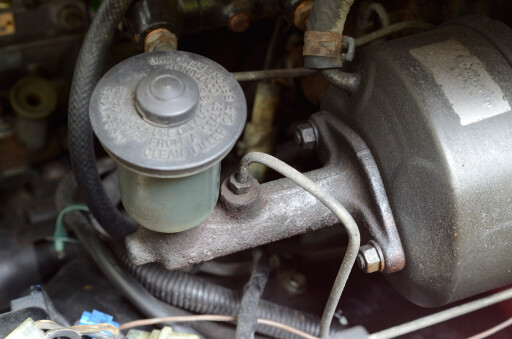 “We always try to have an idle rate, wide angle damper disc. That’s the best way of absorbing the noise and vibration that you get from the engine and transmission, which would normally be absorbed by the dual-mass flywheel,” Stewart explained.
“We always try to have an idle rate, wide angle damper disc. That’s the best way of absorbing the noise and vibration that you get from the engine and transmission, which would normally be absorbed by the dual-mass flywheel,” Stewart explained.
“With any modification, whether it’s a suspension lift, whether it’s big tyres, whether it’s adding racks and bullbars and things like that, there’s always going to be something to counteract that modification...
“So if you’re fitting bigger tyres that have a mud pattern, they’re going to be noisy; if you’re lifting the car then it’s potentially not going to be as stable or smooth as it was from factory... So there’s always a compromise.
“And with clutches, if you’re adding a heavy-duty clutch, sometimes that compromise is as simple as a 10 per cent increase in pedal effort, and with a single-mass flywheel conversion sometimes that’s a small increase in NVH (noise, vibration and harshness) that can come through the cabin.
“But, generally, we always try to design the clutch in such a way that most people will hardly even notice a noise increase.”
CLUTCHES FOR COURSES
ACS OFFERS a variety of heavy-duty clutch kits to suit different applications, from those who drive unmodified vehicles through to those who want to go off-road racing.
“In four-wheel drive, we have several different levels depending on vehicle modifications and the type of use that the vehicle sees,” explained Stewart. “We cater for everything, from a person who might have a Nissan Navara or something similar and he’s a tradie who tows every day, to someone who’s actually going to go rock crawling.
“Generally, the first stage is just an increase in clamping force, with an original-style organic friction disc, and is something that will drive very similar to a stock clutch.
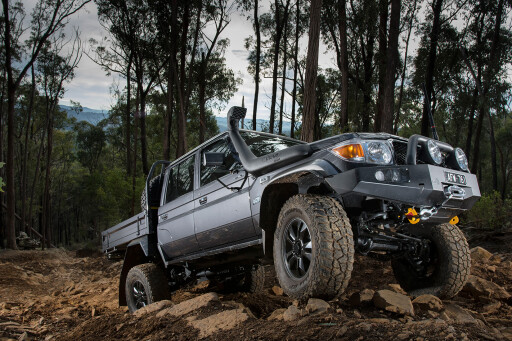 “The second stage is what we call an extra heavy-duty. So it’s a second increase in pressure plate camping force, still with an organic disc for drivability but a little more increase in pedal effort.
“The second stage is what we call an extra heavy-duty. So it’s a second increase in pressure plate camping force, still with an organic disc for drivability but a little more increase in pedal effort.
“And then you jump into the ceramic friction material. We have what we call a cushioned ceramic disc that still provides a small amount of drivability, but it can have a small increase in shudder and a small amount of pedal effort increase...
“Or we go straight to a button disc, which is normally something that guys who are doing a Dakar-type rally would be using,” Stewart said. A button disc is essentially a friction disc, which still has a sprung centre, but on which is riveted several sintered friction pads.
“Normally it’s five or six paddles in something like a 4x4, and we call that a button disc or a paddle disc. They’re normally used for competition-type stuff; it’s not the sort of thing that most people would find comfortable to drive every day.
“But if you’re in a competition or something like that, comfort is not one of the primary factors you’re looking for.”
COMPLETE KIT
WHEN you buy a new heavy-duty clutch kit from ACS, it comes with everything you’ll need to fit it to your vehicle.
“We pride ourselves on supplying all of the required components with every clutch kit; all of the hardware and data for most mechanics to be able to fit the clutch kit confidently, without having to go back and get extra components,” said Stewart.
“In our heavy-duty kits, we always try to supply an alignment tool, if required, to help centre the clutch when installing it. We always try to offer a pilot bearing, a new thrust bearing, and basically offer all of the components that are required to ensure the fitment of that kit goes right the first time ’round.”
“We also supply technical documents that specify any torque settings and anything like that which is critical to fitment. Even things like spline grease, we supply that to ensure people are actually lubricating the spline correctly on the gearbox, and also the release bearing.”
SERVICE LIFE
JUST because you’ve fitted a heavy-duty clutch to your vehicle doesn’t mean it will outlast an OE clutch, but it will still do a much better job.
“Every different product and every different vehicle is going to have a different service life, but I would say that if you’re some level of enthusiast and you have some level of mechanical sympathy, you should be able to achieve 40,000 to 50,000km out of a heavy-duty clutch when using it in a heavy-duty application,” advised Stewart.
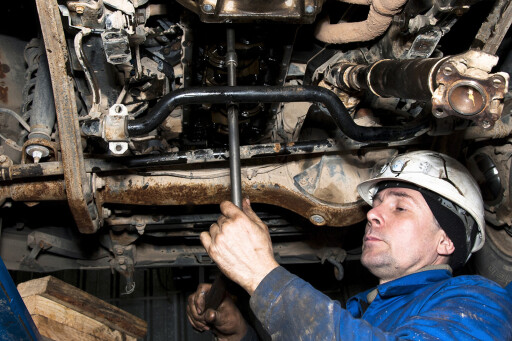 “A heavy-duty clutch doesn’t necessarily mean the product will outlast an OEM product for service life; what it does mean, though, is that it will do the job that the OEM product hasn’t been able to do.
“A heavy-duty clutch doesn’t necessarily mean the product will outlast an OEM product for service life; what it does mean, though, is that it will do the job that the OEM product hasn’t been able to do.
“If you put a factory clutch in and it doesn’t hold the torque, and then if you put in a heavy-duty clutch and it does hold the torque, that’s the job of the heavy-duty clutch, to actually outperform the OEM one but not necessarily outlast it.
“Most people understand they need a heavy-duty clutch when they’re going off-road, because the factory ones do fail, but they don’t necessarily understand why.
What we see more and more is the safety factor built into an OE clutch is not necessarily up to the aftermarket modifications that people are making on their vehicles, so that’s sometimes where our product comes into play, because the factory units just don’t last when owners put on all the extra weight and/or increase the torque.”
KEEPING IT COOL
STEWART said a small amount of mechanical sympathy is the best way to look after and extend the life of your vehicle’s clutch.
“You can really abuse the hell out of a vehicle, but if you take it back to 80 to 90 per cent when you’re off-road, and you’re not just ramming the vehicle over things, then you can save components,” he said.
“When you relate that to clutches, anything that generates a significant amount of heat is also going to generate a significant rate of wear. So if you’re riding the pedal trying to get up a hill, rather than engaging low-range and being completely off the pedal, that’s obviously a bad thing.
“Other things that can cause problems for 4x4 owners are dust or mud or moisture getting into the bellhousing. That can get into the clutch itself and can dry up the release bearing, the pilot bearing, the friction disc... and then you end up with squeaking, premature thrust bearing failure and things like that.
“So going through a creek and completely flooding the bellhousing; that can cause the clutch to slip and become contaminated with muddy river water. We have examples where people may not have put a boot back on to the clutch fork when they’ve reassembled everything inside the bellhousing, and now there’s dust and mud getting in there,” Stewart said.
“But anything like that where you get contamination inside the bellhousing, that’s definitely going to prematurely wear and damage the clutch.”

COMMENTS